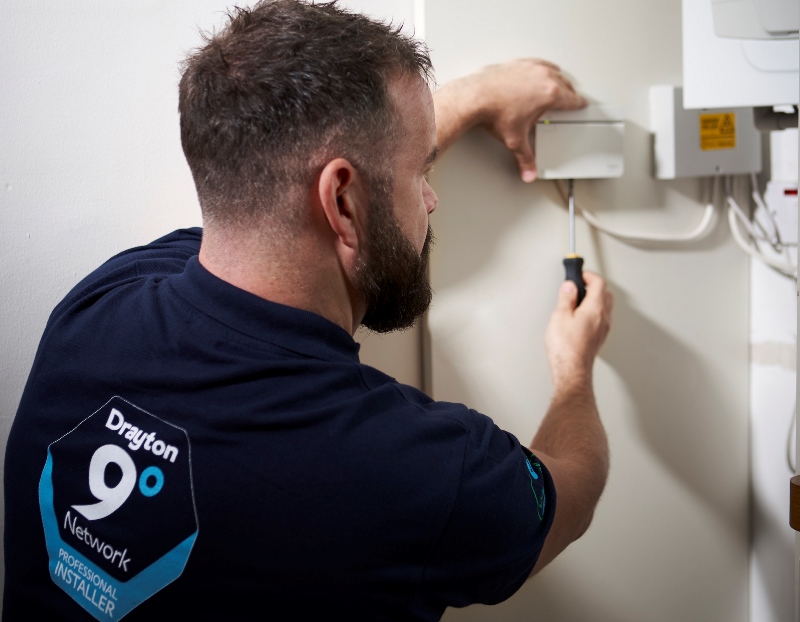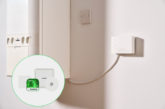
With so many options available on the market, the type of heating control required will depend on various individual circumstances. Here, Dave Kempster, Future Offer Manager at Drayton, discusses the top five things to consider when recommending a heating control for a customer.
Given the widening popularity and availability of heating controls, installers are increasingly tasked with advising their customers on the most appropriate choice. So, what are the most important things to consider to ensure customers receive the best user experience?
1. Living Patterns
In recent years, the world has undergone significant change, which has impacted how people live. The pandemic and more flexible attitudes towards work has seen an increase in remote working. Additionally, multi-generational households are becoming more prevalent due to the cost of living, with CBRE reporting that this type of living arrangement has increased by over 38% from 2010-2020.
People now require more functionality from their heating controls to suit individual preferences and behaviours. For example, remote workers may only need to heat the one room they’re working in. Equally, multi-generational households may need to schedule the heating to come on in different rooms at different times and different temperatures.
As such, multi-zoning capabilities might be necessary, allowing each room to be independently heated. As well as providing comfort to every occupant, this way of heating the home also offers large efficiency benefits, by reducing wasted energy spent heating empty rooms. Research from BEAMA found that upgrading from basic heating controls to a multi-zone system can offer savings of up to 30% on an average heating and hot water bill, equating to a £295 saving per year.
2. Heating Management
Just as household preferences should be considered when recommending controls, management preferences should also be a key factor.
Modern smart heating controls, such as Wiser, are easily customisable for homeowners, allowing them to set up their schedule via an app on their smart phone, which can be adjusted at any time, from anywhere in the world.
Whilst smart home solutions are improving all the time, the introduction of this technology need not overwhelm those who prefer more traditional heating controls. For this type of customer, there are familiar programmable thermostat solutions available on the market that can deliver similar benefits as smart controls when it comes to ease of use and efficiency.
For example, the new Digistat from Drayton is a programmable thermostat with Bluetooth connectivity, allowing homeowners to create and manage their heating schedule either on the thermostat itself, or via the Wiser Home app. Offering this type of flexibility ensures that with just one product, installers can meet the needs of different customers.
3. Heat Source
Installers must ensure that the heating control they are recommending is compatible with the heat source, whether that be gas, electric, heat pump, or a hybrid system. Finding a complimentary control is paramount in ensuring that the homeowner will be able to suitably manage their heating system and that it will run as efficiently as possible. Additionally, for customers with a hybrid heating system, it is important to consider ease of use as in the past, a separate control would have been required for each type of heat source.
Today, there are now heating control solutions available on the market that are compatible with all types of heat source, helping to make the selection process easier for heating engineers. Additionally, with solutions such as Wiser that are capable of controlling multiple heat sources within the same app or interface, heating engineers can offer their customers a more seamless user experience.
4. Efficiency Improvement
The efficiency of the home is a big topic due to the climate crisis and increased energy costs. With that in mind, installers have a duty to commit to educating their customers on how they can save energy.
Recommending a smart control with efficiency-improving features is one way to guarantee savings. Some smart controls offer smart modes, such as Wiser’s Away Mode and Eco Mode, which can help homeowners save an additional £157 per year by enhancing performance of the heating system. Many smart controls now also offer real-time energy consumption insights, allowing homeowners to see exactly how much energy is being used enabling them to make changes if required – essentially putting them back in control.
5. Special Requirements
It is also crucial to note what other specific requirements an individual may need from their heating control, especially in terms of accessibility. Users may require hands-free control, audible clicks or tones to confirm actions, and easy-grip buttons. One such solution is the new Digistat, which is suitable for a wide range of consumers, including those with impaired sight and hearing, and is listed as a recommended thermostat by the Research Institute for Disabled Customers (RiDC).
A one size fits all approach for specifying heating controls isn’t recommended. Getting to know the customer and their needs is paramount to a successful installation and their continued satisfaction. By being clued up on the benefits offered by different types of heating control, installers will be in a prime position to help their customer get the most from their heating system.













